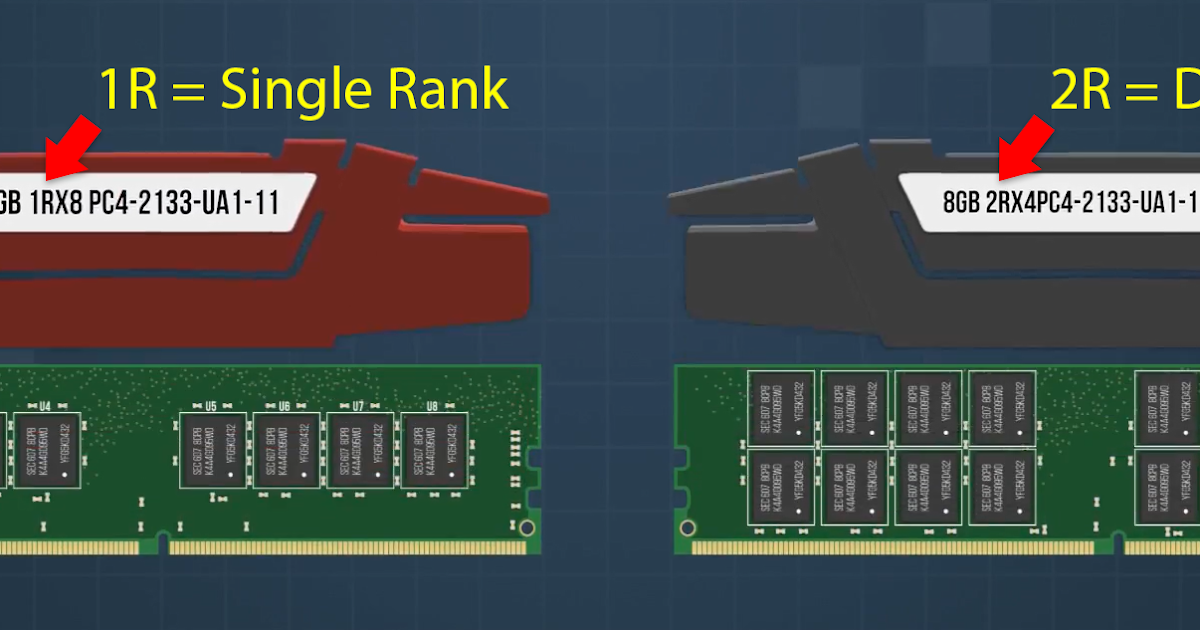What Is Memory Rank: A Comprehensive Guide
What is memory rank? Memory rank is a term used to describe the number of memory chips that are installed on a single memory module. A memory module with a single rank has all of its memory chips installed on one side of the module, while a memory module with a dual rank has its memory chips installed on both sides of the module.
The number of ranks on a memory module can affect the performance of the module. Memory modules with a higher number of ranks tend to have higher performance than memory modules with a lower number of ranks. This is because memory modules with a higher number of ranks can access more data at the same time. Memory modules with a higher number of ranks also tend to be more reliable than memory modules with a lower number of ranks. This is because memory modules with a higher number of ranks have a lower chance of experiencing a failure.
The number of ranks on a memory module is an important factor to consider when choosing memory for your computer. If you are looking for the best possible performance, then you should choose a memory module with a high number of ranks. If you are looking for the most reliable memory, then you should choose a memory module with a low number of ranks.
Personal details and bio data of that person or celebrity in the form of table
Transition to main article topics
what is memory rankIntroduction: Highlighting the importance of the key aspects.
Key Aspects:- Number of memory chips
- Performance
- Reliability
{point}Introduction: Set the context of "{point}" in relation to "what is memory rank", emphasizing its relevance.
Facets:- Number of memory chips
- Performance
- Reliability
{point}Introduction: Focus on the connection between "{point}" and "what is memory rank", considering cause and effect, importance, and practical significance.
Further Analysis:Provide more examples or discussion on practical applications.Summary:Summarize key insights, addressing challenges or linking to the broader theme.Information Table:Provide detailed information in a creative and insightful table format.FAQs on "What is Memory Rank?"
This section provides concise answers to frequently asked questions about memory rank, aiming to clarify common misconceptions and concerns.
Question 1: What is the significance of memory rank in computer systems?
Memory rank plays a crucial role in determining the performance and efficiency of a computer system. It affects the speed at which data can be accessed and retrieved from memory modules, impacting overall system responsiveness and application load times.
Question 2: How does memory rank impact system stability and reliability?
Memory rank can influence the stability and reliability of a computer system. Higher-rank memory modules generally offer improved reliability due to the distribution of data across multiple memory chips. This redundancy helps reduce the likelihood of data loss or corruption in the event of a single chip failure.
Summary: Understanding memory rank is essential for optimizing computer performance and ensuring system stability. By choosing appropriate memory modules with the desired number of ranks, users can enhance their computing experience and minimize potential issues.
Conclusion
In conclusion, memory rank plays a significant role in the performance and reliability of computer systems. By understanding the concept of memory rank, users can make informed decisions when choosing memory modules for their computers, ensuring optimal system operation. Higher-rank memory modules offer faster data access, improved stability, and enhanced reliability, making them a valuable consideration for demanding applications and mission-critical systems.
As technology continues to advance and memory requirements increase, the importance of memory rank will only grow. By staying informed about memory technologies and best practices, users can harness the full potential of their computer systems and maximize their computing experience.
Top-Rated Graham Elliot Bistro: Discover Culinary Delights
The Ultimate Terraria Destroyer Strategy: Conquer The Mechanical Menace
Who Really Owns Kohl's Department Store? - A Comprehensive Guide

